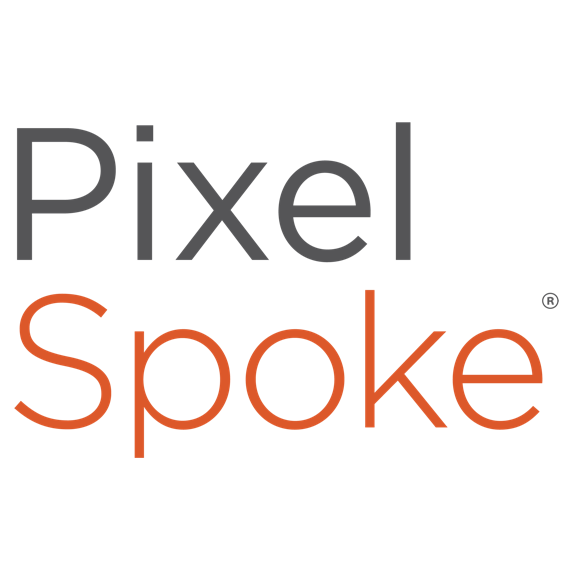Inclusivity has always been at the core of the credit union movement. After all, credit unions came into being to serve the needs of vulnerable populations who could not otherwise get loans or open bank accounts. With a mission to better the financial lives of those underserved by traditional banking models, credit unions have long prioritized member experience over profit, resulting in a strong sense of community and lasting member loyalty.
Since the onset of COVID-19, much of that member experience has moved online. A survey conducted by Fidelity National Information Services (FIS) revealed that over 45% of banked respondents, across all ages, have shifted to online and mobile channels to handle their finances. It seems safe to assume that digital will continue to be the channel of choice for many going forward.
But how can you ensure that your digital experience is inclusive? How can you create an experience that doesn’t alienate your most vulnerable and financially stressed out members — the very people that credit unions were designed to serve?
In their excellent book, Design for Real Life, Eric Meyer & Sara Wachter-Boettcher describe inclusive design this way: "Instead of treating stress situations as fringe concerns, it’s time we move them to the center of our conversations — to start with our most vulnerable, distracted, and stressed-out users, and then work our way outward."
The concept of inclusive design is increasingly relevant, and not just in the context of digital marketing. If, for example, we were to redesign our systems and infrastructures in ways that don't treat people who are low income, housing insecure, female, Black, Indigenous, people of color, LGBTQ, undocumented, disabled or mentally ill as "edge cases," but rather put their stresses and needs front and center, we might be living in a very different world right now.
Credit unions may not be in a position to redesign social systems infrastructures, but you can take steps to improve your digital experience. Here’s how:
Rethinking Personas
At its core, inclusive design means building your digital experience primarily for "stress cases" instead of tidy personas who are intended to encapsulate your core audiences. Personas can certainly be useful tools—we use them as part of our website redesign process—but they can also run the risk of becoming exclusionary, failing to address the needs of those a credit union might consider "outside the norm."
It's also important to note that "stress cases" don't have to relate to a core component of a person's identity—they can also be situational. Even your smiling persona "Ambitious Adrianna," who was "recently promoted" and "wants to save money for upgrading her home" is going to have a rough day, month, or year. I would venture to guess that 2020 has taken its toll on her, too!
Personas are often product-driven, but for credit unions in particular, members are rarely driven by purchases alone. Instead of prioritizing a pathway to profit, credit unions would benefit from allowing member needs, goals, and stress points to drive design. Strategic digital engagement begins with pinpointing those motivational drivers.
Sound Credit Union (one of our clients) surveyed its members to find out how they were being impacted by the pandemic. They expected a few hundred responses and received over 8,000!
While personas often simulate user needs, relying on superficial archetypes, by directly engaging with your members, via surveys or targeted research, you can better understand their challenges, questions, motivations, and aspirations. And as Sound discovered, many members appreciate being asked about their challenges and are more than willing to share.
Beyond Compliance
What do inclusive design and ADA compliance have in common? They both take into account the nearly 61 million adults across the United States (26%) who live with some form of a disability.
But credit unions often think of ADA compliance as exactly that — compliance. It’s a list of items you have to grudgingly check off to avoid “getting in trouble.” We ourselves conduct many ADA scans for our clients and understand how tedious they can be. Yet shifting from a compliance to an opportunity mindset, putting the needs of your disabled members front and center, can inspire innovative solutions that foster new opportunities for engagement and create a better member experience.
Closed captioning, for example, is obviously beneficial to those who suffer from hearing impairments. Yet we have all sat in a crowded bar, waited in a noisy airport, or forgotten our headphones at an inopportune juncture. Because of a feature specifically designed for the hard-of-hearing population, we are all able to enjoy a show or catch the latest news at times when audio is not a viable option.
Similarly, a solution that works for someone who has visual impairments may also benefit members on lengthy commutes who are unable to take their eyes off the road. A voice-to-text option benefits those with physical disabilities and can also benefit new parents who are frequently holding and feeding their babies. A high contrast screen and enlarged text option proves equally advantageous to users with colorblindness as much it does to users who simply misplaced their reading glasses.
Inclusive design accounts for this spectrum of abilities—permanent, impermanent, and situational alike. The result is connection across a diverse range of people facing similar circumstances and a reaffirmed organizational commitment to underserved groups.
Back to Basics: Aligning with Your Foundational Principles
On some level, it’s human nature to consider one’s own level of ability as a baseline for the masses. Intent aside, when we favor the benefits of the few under the guise of “normalcy,” we discount the potential exclusion to the many.
If 2020 has taught us anything, it’s that there is no “normal.” Let’s consider our “Ambitious Adrianna” persona and think about how this past year may have affected her. Maybe after being promoted in 2019, she lost her job when COVID hit. Or maybe she had to take time off from work to homeschool her children. Maybe she had to evacuate her home during the West Coast’s unprecedented wildfires. All of these very likely scenarios might not only affect Adrianna’s plans to upgrade her home, but they also add nuance, humanity, and complexity to that smiling stock photo in your persona deck.
A commitment to equal opportunity is at the heart of the credit union movement. Diversity is our asset, inclusion is our challenge, and empathy is our means to address it. Whether we're redesigning a website, creating a strategic plan, improving member experience, or crafting community programs, your members' wide-ranging fears, stresses, hopes, and dreams should always be at the core.








